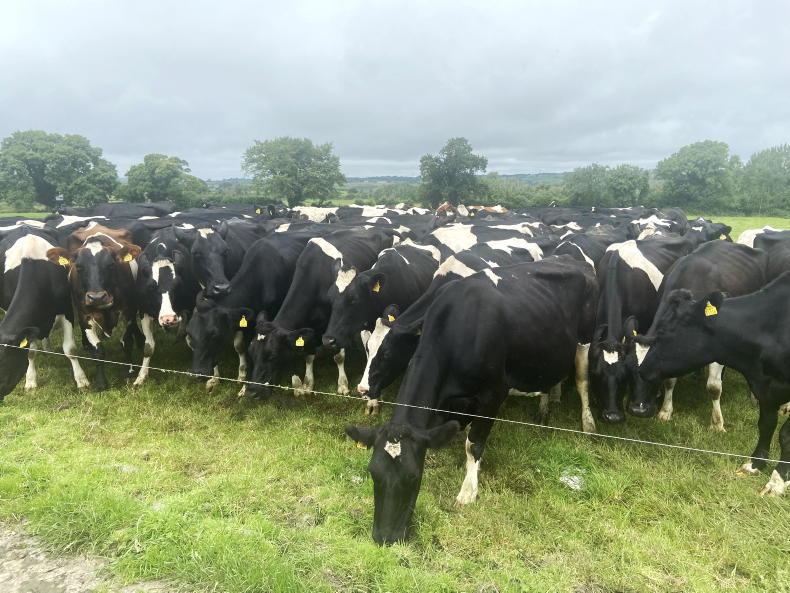Overlooking the Fergus estuary at Ballynacally in Co Clare, the Garry farm was another picturesque farm. Tom Garry is milking just shy of 80 cows on a 27ha milking block, giving a stocking rate of just over 2.8 cows/ha.
All the land is one block with the heifers contract-reared. A further 10ha of silage ground is purchased as a standing crop annually.
According to Tom, the biggest challenge on the farm is the weather as the land is very variable, with half of the land down near the estuary liable to flooding during very wet weather when the river breaks the banks. The other half of the farm is very dry and subject to drought in dry conditions. With limestone rock so close to the surface, the farm burns up really quickly.
The plus side is that it is free-draining and so early spring grazing is possible, something Tom has a long history of doing and has been a mentor for other farmers in the locality in terms of grassland management.

Tom has bred a fantastic herd of cows with the herd of all black-and-white cows averaging 3.83% protein and 4.44% fat last year.
Total milk solids sold to Kerry was 455kg MS/cow in 2020 from 680kg of meal per cow. The herd EBI is a very impressive €190 and the cow liveweight is 580kg when they are mature.
The maintenance sub-index is €18 and most of the herd is primarily New Zealand breeding.
Tom does four milk recordings per year and one-third of the herd got teat sealer only last year at drying off, with no obvious effect on SCC or mastitis this year, with an average SCC of 79,000.
Labour
In terms of labour, Tom is helped out in springtime by a person who does two hours’ work each morning – cleaning cubicles and feeding calves. He also gets to help train a Green Cert student most years, plus he has family help when required. His daughter, Alison, was helping out on the day the judges arrived.
He does once-a-day AI and once-a-day milking in February and also feeds the cows at night, so most of them calve during the day.
Tom is using mostly protected urea on the grazing block and pasture sward on the silage ground. Recent soil test results show a reduction in phosphorus on some fields, so he is planning to use more 18:6:12 on the low-index fields.






 This is a subscriber-only article
This is a subscriber-only article











SHARING OPTIONS: